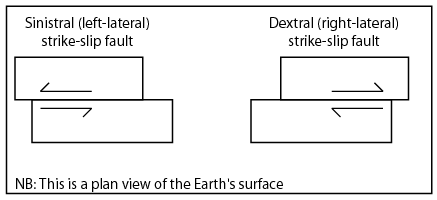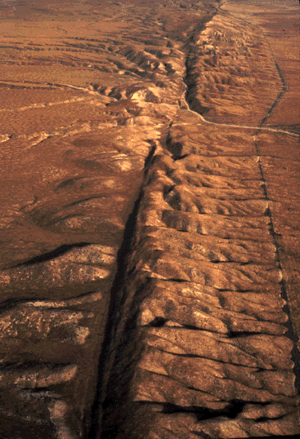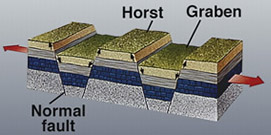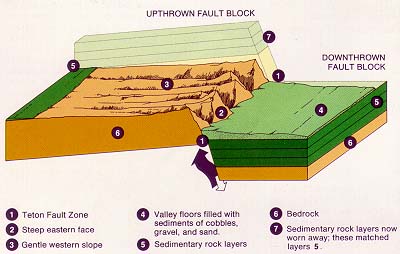EXPLORATION: Layers and Plate Tectonics
5. Faulting
If rock is stressed enough, a fault may occur. A fault is simply a crack in the earth's crust. Faults can occur in the middle of a plate or at a plate boundary. The crust moves either vertically, horizontally or a combination of both (obliquely) on each side of the fault.
Fault types:
Normal Fault
In a normal fault, one section rises
up and over in comparison to the other, resulting in the hanging wall
overhanging the foot wall.
Reverse Fault
In a a reverse fault, one section drops down with no overhanging. Slip-strike fault
Slip-strike fault
In a slip strike fault, the sections are sliding past each other.
 |
| Diagram of a slip-strike fault (from above) |
 |
| The San Andreas fault in California is a famous example of a slip-strike fault |
Note it is not usually this simple. There can be a mixture of
horizontal and vertical movement in a fault. For example a horizontal
tear fault may occur with a reverse fault.
As well, there are often many faults occurring together, which geographers call a "fault zone."
Horsts and Grabens
- These fault types result in large blocks of crust either being raised up or sunk down. This often forms mountain ranges.
 |
| Diagram of Horst and Graben |
 |
| The Grand Teton Range of the Rock Mountains in Wyoming are an example of Horst or Fault Block Mountains |